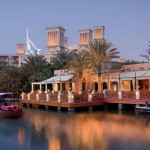Highlights of Hull as City of Culture 2017
Hull will send culture to Coventry as the culture baton passes to the black country city. A burnished baton.

When the gritty port city took on the task of representing Culture as 2017 city of culture it also took on skeptics doubtful Hull could pull it off. Hull has suffered more than many regional centres from economic head winds. And not just those blasting up the Humber from the North Sea. The decline of the fishing fleet – for years the backbone of the local economy – hit Hull hard. The windswept North Sea city was not an obvious pick as a culture showcase.
But the Yorkshire port city took up the challenge with gusto, curating a year of varied, original, and cutting edge offerings. Among them was the Hull Central Library show entitled The Tool Appreciation Society, humorous artworks were the theme of An Eyeful of Wry: government art collection, and Hull, Portrait of a city, was a photo exhibition at the Humber Street Gallery, in collaboration with legendary agency, Magnum.

And, of course, a year of culture in Hull would not be complete without the city’s poet laureate. Larkin Reflections was an exploration of Larkin’s legacy.
With characteristic determination Hull embraced its heritage as a mighty backdrop to contemporary culture. Now to build on a year as culture capital, Hull’s most visible cultural beacon is capitalising on a year at the cultural forefront with a cutting edge theatre piece. The Culture is a Hull Truck Company creation which satirises the process of bringing the world of contemporary art to a public audience. This ‘farce in two acts’ is a satirical take on Hull’s custody of the culture challenge. A suitably wry and ribald finale to a year as UK City of Culture.

“Though often frenetic, Mark Babych’s production contains moments of pause. For one of the City of Culture volunteers, the voluble, competitive former deckhand Gerald (also Hyder), the year has been about bringing back a feeling of community – something he remembers from his days when the fishing industry was booming and Hessle Road – the heart of the industry – was filled with people who knew, and greeted each other, when back on shore leave.
What the play does then – brilliantly – is arrow in on what the City of Culture status means. It’s not about economic impact. It’s something far less measurable, but far more important – a return of a sense of pride and a sense of place.” So said the Stage review.
Away from the stage, street installations were much in evidence on streets and the most visible symbol that Hull was embracing the arts. The cutting edge use of illuminations transformed the noble municipal façade of key public buildings into lively dancing kaleidoscopes of shapes and colours. These state of the art light shows more than anything symbolised the arrival of modern art in a post industrial landscape. On many strategic street corners could be found kinetic sculptures which would not look out of place in the cyborg movie franchise “Transformers”. This was a witty nod to the industrial backdrop.

In keeping with the remit to include Hull icons in the culture offering, The Deep – Hull’s aquatic seafront designer visitor attraction – was transformed through light, sound and digital media. This collaboration entitled Look Up embraced one of Hull’s best known attractions and situated it full square into the UK City of Culture. The Deep also played a part in theatre piece entitled Frogman. This work is described as ‘a coming-of-age, supernatural thriller’ was certain to give the people of Hull a different perspective on The Deep – since its creation, the landmark space to signify Hull’s bond with the North Sea.
Hull Maritime Museum was the venue for something more classically cultural. An exhibition that unites Hull’s own whaling collections with works from JMW Turner, “Turner & The Whale” offers unique insight into Hull’s finest artists and the artistic mind of one of the art world’s most revered landscape painters. On loan from the Tate’s national collection, Turner’s three rare whaling scenes and one maritime scene date from the period when Hull held the title of the UK’s largest whaling port, bringing context to nationally recognised pieces and providing the perfect complement to the Turner Prize that bears his name.

Turner and Hull found common cause in the name of the latest in contemporary art. The biggest prize in contemporary British art made its way to Hull and was showcased in the city’s historic purpose-built Ferens Art Gallery.
The four shortlisted artists for the Turner Prize 2017 got a Hull showcase:
Hurvin Anderson, Andrea Büttner, Rosalind Nashashibi and 2017 winner, Lubaina Himid.
From the swelling seascapes of Turner in the Maritime Museum to the latest in modern art which also bears his name, Hull embraced culture both old and new. Both sound and vision and screen and stage – bookending its year as a culture custodian with a bespoke romping farce by current hot property playwright James Graham. As Hull Truck Theatre’s artistic director Mark Babych noted of his first big production of 2018 marking the end of Hull’s year as City of Culture : ‘It’s the end of the line, but we’re also the beginning of the line’.






